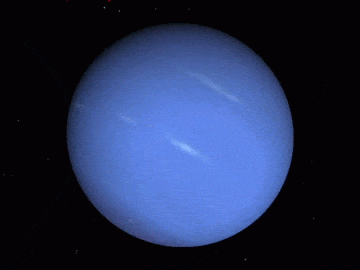Jupiter
 |
| [1] Jupiter |
Being 4.503 billion years old and both the largest planet and the fourth brightest natural object within the solar system, Jupiter definitely makes its presence known. Sometimes referred to as a 'gas giant', Jupiter is mostly composed of light gases; hydrogen (between 88% to 92%) and helium (between 8% to 12%) making it one of the least densest planets within the solar system. The planet has an equatorial diameter of 142,984 kilometres (compared to Earth's which is 12,756 kilometres) and orbits the sun at approximately 29,236 miles per hour taking it around 11.86 years to complete one full orbit around the host star. Having the strongest gravitational pull of any planet within the solar system, Jupiter has 79 moons which orbit its atmosphere where 8 of these are located in 1 of 4 of the planets rings which are mostly composed of dust and rock. The 4 rings that orbit Jupiter's atmosphere are the thinnest within the entire solar system and begin "some 92,000 kilometres above Jupiter's cloud tops and stretches out to more than 225,000 km from the planet" [2]. In addition to this, Jupiter has the shortest day out of all the planets within the solar system turning "on its axis once every 9 hours and 55 minutes" [2] and has overtime formed an oblate shape due to this fast rotation. The Video below helps give a brief overview of the planet:
Another interesting feature of Jupiter is its 'Giant Red Spot' that formed some 350 years ago. Although shrinking, this massive storm can still fit approximately two or three earths within it "measuring in at 10.159 miles (16,350 kilometres) in width" [4] and hitting speeds up to 425 miles per hour. Most of Jupiter's atmosphere "is filled with a lot of smaller storms that do come and go, much like our tropical cyclones" [5] and has clouds that are unique to say the least. These clouds are "primarily made of ammonia crystals, sulfur, and mixtures of the two compounds" [2] and create different colours when the chemicals are exposed to sunlight. Overall, astronomers still want to find out more about this mysterious planet and with many missions to come, these questions will soon be answered.
References:
[1] giphy.com. [n.d.]. Jupiter GIF. [Online] Available at: https://giphy.com/gifs/jupiter-s2uampOAMWksU [Last Accessed 18/10/2020].
[2] Jones, C. [ 2020]. Jupiter Facts. [Online] Available at: https://space-facts.com/jupiter/ [Last Accessed 18/10/2020].
[3] National Geographic. [2018]. Jupiter 101. [Online] Available at: https://www.youtube.com/watch?v=PtkqwslbLY8 [Last Accessed 18/10/2020].
[4] Perez, M. [2017]. Jupiter's Great Red Spot Swallows Earth. [Online] Available at: https://www.nasa.gov/image-feature/jpl/pia21774/jupiter-s-great-red-spot-swallows-earth [Last Accessed 18/10/2020].
[5] courses.lumenlearning.com. [n.d.]. Storms of Jupiter. [Online] Available at: https://courses.lumenlearning.com/atd-fscj-astronomylab/chapter/storms-of-jupiter/#:~:text=Jupiter's%20atmosphere%20is%20filled%20with,waves%20in%20the%20Jovian%20atmosphere. [Last Accessed 18/10/2020].


Comments
Post a Comment